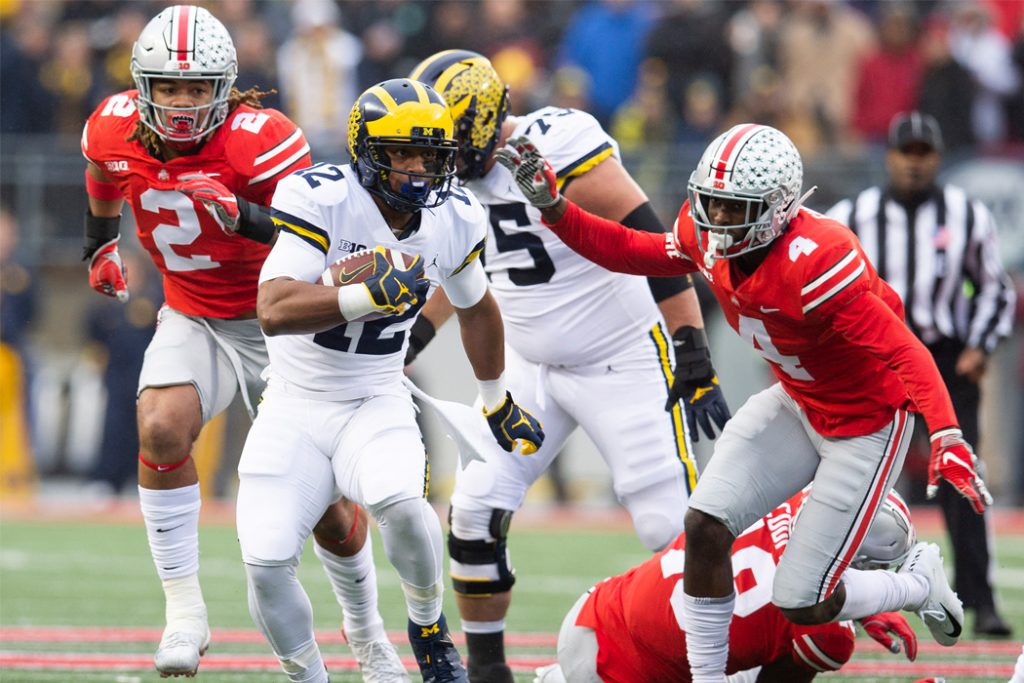Big Ten Conference Brought In Revenues Of $759 Million
May 17, 2019
The Big Ten Conference, the oldest in American college sports, recorded nearly $759 million in revenue during its 2018 fiscal year.
The figure, which far exceeds any comparable annual figure for a college sports conference, was revealed in a new federal tax return that the conference provided Wednesday in response to a request from USA Today. It is a year-over-year revenue increase of 48 percent, with the conference reaching $512.9 million in fiscal 2017.
USA Today’s Steve Berkowitz reports:
The return also showed that Big 10 Commissioner Jim Delany was credited was just over $5.5 million in total compensation for the 2017 calendar year. That, too, is a single-year record for a conference.
The revenue total was driven by new TV agreements that took effect at the start of the 2017-18 school year and resulted in payments of roughly $54 million to each of the 14-team conference’s 12 longest-standing members. Maryland and Rutgers received smaller revenue-share amounts, but both schools also received loans from the conference against future revenue shares.
Despite the conference’s name, the Big Ten has grown to 14 member universities. The original 10 are Illinois, Indiana, Iowa, Michigan, Michigan State, Minnesota, Northwestern, Ohio State, Purdue, Wisconsin. Four more joined in 2014: Maryland, Nebraska-Lincoln, Penn State and Rutgers (state university of New Jersey).
In February, the Southeastern Conference reported just under $660 million in revenue for fiscal 2018, resulting in an average of $43.7 million being distributed to the 13 member schools that received full shares. Mississippi did not get a full share because its football team was banned from postseason play.
The 10-team Big 12 recently reported $374 million in revenue for 2018.
The Big Ten’s new basic per-school share means that those programs received more money from one revenue source than the vast majority of Division I athletics departments had in total. More than 170 of the 213 public-school athletics programs outside the Big Ten reported less than $54 million in operating revenue for fiscal 2017, the most recent year for which figures have been compiled by USA TODAY, in partnership with Syracuse University’s S.I. Newhouse School of Public Communications.
As for Delany, his compensation total surpasses the nearly $4.8 million that the Pac-12 Conference reported paying Commissioner Larry Scott in 2016. (Under IRS rules, a non-profit organization must report its revenue and expense data based on its fiscal year, but it must report compensation data based on the calendar year completed during the fiscal year. The Big Ten’s fiscal year ends June 30.) Scott also has continued to have the benefit of a nearly $1.9 million loan, dating from fiscal 2010.
In July 2015, Delany became fully eligible for more than $20 million in future bonus payments – and those amounts started becoming part of the Big Ten’s compensation reporting on the new return.
Delany’s base pay in 2017 was $2.25 million, about $125,000 more than it was a year earlier. He also received nearly $1.5 million in bonus pay – all of which came from the future bonus total, according to Big Ten Associate Commissioner and Chief Financial Officer Julie Suderman.
In addition, Delany accrued – but was not actually paid – another $1.7 million. A majority of that amount also came from the future bonus total, Suderman said.
Delany’s base compensation for 2017 was slightly lower than that of Big 12 Conference Commissioner Bob Bowlsby, who received $2.4 million. Bowlsby was credited with a total of nearly $4.1 million, although nearly $760,000 of that had been reported as deferred pay in prior years.
Maryland’s loan from the Big Ten in fiscal 2018 was just under $31 million. When added to its revenue share of $26.1 million, this means Maryland received more money from the Big Ten in 2018 than any school. But it also means Maryland has been loaned more than $66 million during its first four years in the conference, and its future revenue shares will be adjusted accordingly.
Rutgers’ loan from the conference — $14 million — is its first. Rutgers’ revenue share for 2018 was $11.7 million.


